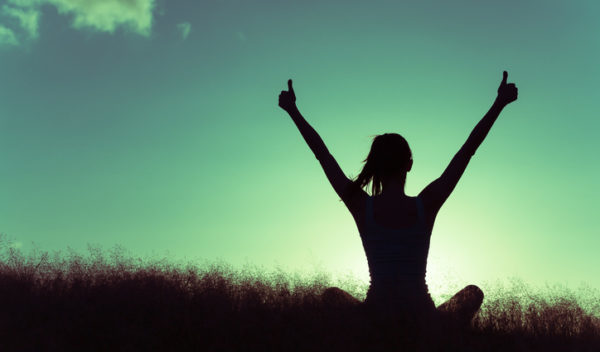
Turns out, getting in touch with our emotions and desires — those things that really root us — are what set us on the path to real change.
“We don’t need to be perfect, just to keep moving in our desired direction,” says Rachel Land, a senior Yoga Medicine teacher.
Land notes recent research into neuroplasticity, which is our ability to reshape our minds. Experts say that we re-assess our sense of self every 50 milliseconds.
“The implication is that we don’t have to wait for an auspicious date like New Year’s Day to make changes; we all have the power to change, the moment we truly want to,” Land adds.
Let’s explore a few ways to launch your inner journey and align the mind, body, and spirit to attain your goals.
MAP OUT YOUR DESIRES
Danielle LaPorte’s method for identifying our “core desired feelings,” instead of goals, has helped many people get in touch with what they really want and reach those goals. As outlined in “The Desire Map,” LaPorte says we should go after the feelings we want to achieve instead of the goals. Once you have those core desired feelings established, you can then map out what things will help you realize those feelings.
In first establishing the feelings you want instead of goals, you may see that your goals don’t really align with what you really want. That’s okay — follow your feelings, she encourages. For example, if your goal is to feel better in your clothing, setting a goal of losing 10 pounds may not achieve it. Maybe starting a walking regimen or strength training will enable you to tone up instead of watching the scale drop.
THINK SMALL
Shoshana Bennett, a clinical psychologist, said New Year’s resolutions are typically a set-up for failure. “If we root our happiness on particular outcomes, it’s an anxiety-producing way to live,” she tells LiveLeadPlay. “There’s nothing wrong with dropping fat, earning more money, or moving into a larger home, but you never want to base your enjoyment of life on huge, external events. That’s a trap.”
Instead, choose one simple behavioral change that will support your physical, mental, or spiritual health and make it a habit. Instead of reading the entire Bible, read a few verses from a devotional book each morning. “When we choose one little and uncomplicated behavior, it’s easy to set ourselves up for success. And as an extra bonus, one little positive change often leads to another,” Bennett adds.
THEN GET ACTIVE
Okay, you don’t have to start training for the Olympics, but finding one activity you enjoy is a great way to improve physical health — and that’s where a lot of people want to improve, especially during the summer. Jimmy Minardi, a certified personal trainer and yoga teacher, says that forcing ourselves to go to the gym or take classes we’re not passionate about makes working out feel like a chore.
“I’m a huge proponent of getting outside, communing with nature, and reconnecting with your environment. Going for a hike or even doing outdoor chores help you develop spiritual awareness,” he tells LiveLeadPlay.
Recently, a study found that outdoor exercise was associated with greater feelings of revitalization, increased energy, and positive engagement. The study also reports that it lowered tension, depression, confusion, and anger. Study participants also reported greater enjoyment and satisfaction with outdoor activity and stated that they were more likely to repeat the activity at a later date.
You don’t have to go outdoors to be active. Land notes that a few yoga practices can help us gain better mental clarity:
• Tapas, or self-discipline, refers to the tie between physical effort and mental resolve. Every time we deliberately ignite our willpower to do something we don’t want to do in the moment, like stay in a challenging yoga pose, we feel tapas in action. We’ve all felt the surge of resolve we gain from overcoming inner resistance and staying the course; yogis believe that this tapas heat builds to burn away lethargy and impurity.
• Abhyasa, another key mental discipline described in Patanjali’s sutra, means “sustained effort” or “diligent practice”. When we commit to regular yoga practice or a training schedule, we exhibit abhyasa. Each time we walk the path, we make it easier to walk the next time.
• Svadhyaya translates to “meditating on one’s self”. This encourages us to examine the true source of our resistance to achieving our goals. When we hit snooze on our morning alarm instead of getting up to practice yoga, svadhyaya prods us to uncover the true source of our reluctance. Are we simply tired, or self-sabotaging, so that our outer reality continues to reflect our inner image of ourselves? Does our inner image need to change to reflect the life we want to lead?
• Dharna is focus. When we practice goal setting and keep our goals in plain view, we are using dharana.
Giving yourself time to mentally unwind and breathe can be key to really aligning what you want with what you do. If you think about using all three of these techniques together, you can get outside to walk or reflect — it doesn’t have to just be about losing weight, as many people’s goals extend beyond that.
Getting out can make you feel better in general and help you define your “core desired feelings” or goals. It also gives you time to think up small ways to take positive actions towards them.
Be one with nature this summer. Your mind, body, and spirit will most assuredly thank you.

